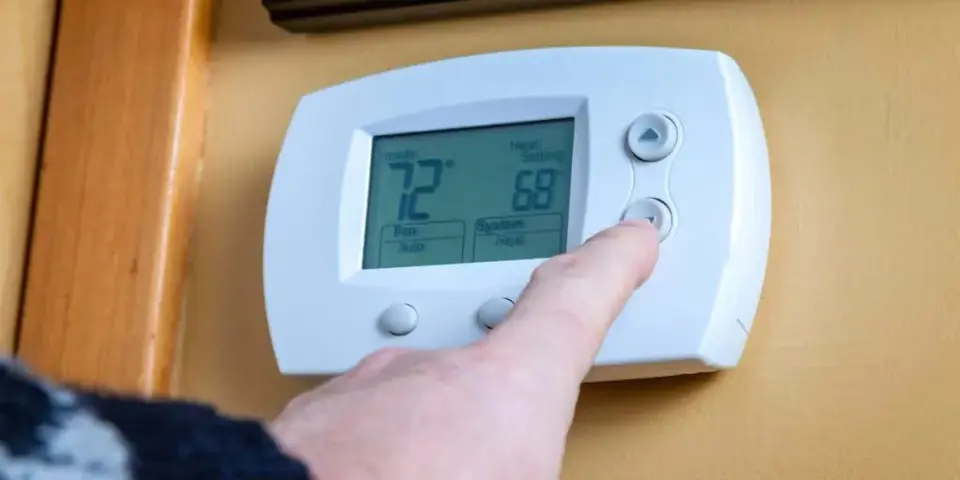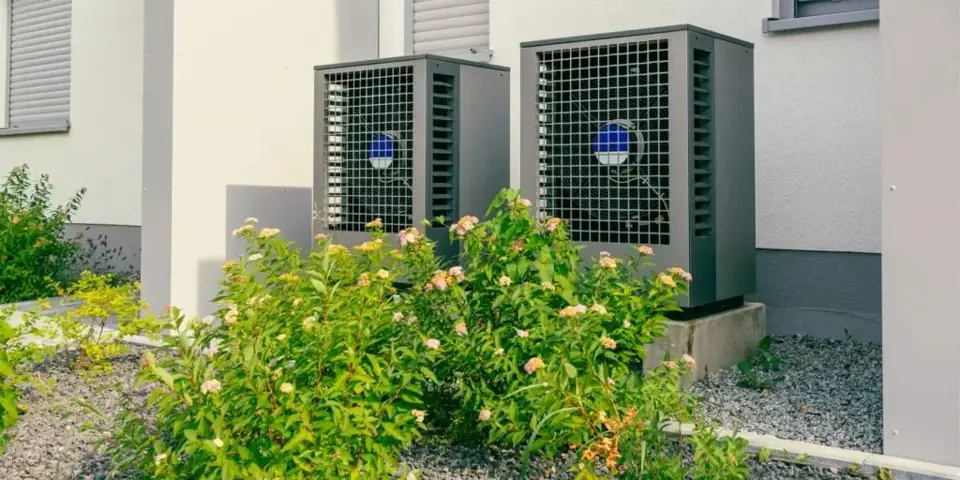When it comes to cooling specialty spaces like server closets, laboratories, and wine storage areas, precision and reliability matter. These rooms often have unique climate control requirements that traditional HVAC systems just can’t meet. That’s where mini split systems—also known as ductless systems—shine.
Mini splits offer targeted cooling for specific zones without the need for extensive ductwork. For commercial properties, facility managers, or even homeowners managing niche climate needs, mini splits provide an efficient and scalable solution.
In this blog, we’ll explore how mini splits are ideally suited for server closets, labs, and wine storage. We’ll also cover how to spec and size these systems correctly for optimal performance.
Why Mini Splits Work Where Conventional HVAC Can't
Mini split systems consist of an outdoor condenser and one or more indoor air-handling units. These units are connected by a small conduit that houses power cables, refrigerant tubing, and a condensate drain. Because of this setup, mini splits can be installed in tight, awkward, or sensitive spaces where conventional HVAC ductwork is either impractical or invasive.
Here’s why they’re ideal for specialty rooms:
- Zoned Precision: Mini splits cool only the space they’re intended to, without impacting adjacent areas.
- No Ducts Required: Eliminates the inefficiencies and space requirements of ductwork.
- Flexible Installation: Indoor units can be wall-mounted, ceiling-recessed, or floor-mounted depending on room constraints.
- Energy Efficiency: Inverter-driven compressors allow mini splits to modulate based on demand, reducing energy waste.
- Independent Controls: Each unit operates independently, ideal for rooms that need 24/7 climate control.
Server Closets and IT Rooms
Server rooms are the nerve center of many businesses—but they generate a lot of heat. Even small server closets with a few racks can reach high temperatures quickly, risking equipment failure.
Why Mini Splits are Ideal:
- Targeted Cooling: Mini splits can provide dedicated cooling without relying on the building’s main HVAC.
- 24/7 Operation: Some mini split systems are designed for continuous use, which is critical for uptime.
- Redundancy: Multiple mini splits can be installed for failover protection in mission-critical environments.
- Humidity Control: Some units include dehumidification features, which is essential to prevent condensation inside equipment.
Sizing Tips for Server Closets:
- Calculate Heat Load: Start with the total wattage of all equipment and multiply by 3.41 to get BTUs/hour.
- Account for Room Size: Add the square footage calculation (BTUs = sq ft × 25) to the equipment load.
- Factor in Infiltration: If the room lacks insulation or has frequent door openings, bump the size by 10–15%.
- Plan for Redundancy: Always consider installing two smaller units instead of one large one for backup and maintenance flexibility.
Scientific & Medical Laboratories
In labs, consistent temperature and humidity can impact everything from test results to chemical stability. Whether you’re running a pathology lab, pharmaceutical facility, or biotech space, HVAC performance must be precise.
Why Mini Splits are Ideal:
- Tight Temperature Control: Inverter-driven mini splits maintain consistent setpoints without wide temperature swings.
- Zone Isolation: Different lab areas can be independently cooled, helping with contamination control.
- Quiet Operation: Wall-mounted indoor units are typically whisper-quiet, reducing ambient noise in research environments.
- Chemical-Resistant Options: Some mini splits come with specialized coatings or filters to withstand harsh conditions.
Sizing Tips for Labs:
- Understand Internal Gains: Consider the heat output from lab equipment (centrifuges, refrigerators, etc.).
- Use Load Calculation Software: For scientific applications, invest in Manual J or similar load tools to ensure accuracy.
- Choose Multi-Zone Systems: For large labs, multi-zone ductless systems allow different temperature settings across zones.
- Consider HEPA-Compatible Units: In cleanroom environments, you may need ceiling cassette units compatible with HEPA filters.
Wine Storage Rooms
Temperature fluctuations and high humidity can quickly spoil valuable wine collections. Wine rooms, whether residential or commercial, need climate systems that are accurate, unobtrusive, and quiet.
Why Mini Splits are Ideal:
- Precise Temperature Ranges: Wine storage typically requires 55°F to 60°F—something mini splits can consistently achieve.
- Low Vibration: Unlike window or through-the-wall units, mini splits run quietly without harsh vibration that could disturb sediment.
- Minimal Intrusion: Wall-mounted indoor units don’t take up valuable wine rack space or aesthetic appeal.
- Better Humidity Management: Properly selected systems can help maintain relative humidity in the ideal 50–70% range.
Sizing Tips for Wine Rooms:
- Calculate Based on Room Volume: Multiply cubic footage by 25–30 BTUs depending on insulation and location.
- Avoid Oversizing: Too large a system can short-cycle, leading to poor humidity control and mold risks.
- Choose Low-Temp Capable Units: Not all mini splits can operate efficiently below 60°F—select a system with low-temp cooling capability.
- Aesthetic Integration: Choose models with clean designs to blend into high-end wine cellars.
Choosing the Right Mini Split System
Not all mini splits are created equal. When specifying a system for specialty applications, consider the following:
BTU Rating
Choose a system that’s correctly sized for both the thermal load and the room volume. Undersized units will struggle to maintain temperature; oversized units may cause humidity issues or short cycling.
System Type
- Single-Zone Systems: Ideal for small, dedicated rooms like server closets or wine cellars.
- Multi-Zone Systems: Useful for larger labs or facilities with multiple climate-controlled rooms.
Compressor Technology
Look for inverter-driven models that offer variable-speed compressors for greater efficiency and climate control.
Temperature Range
Ensure the unit can cool to the low temperatures required by your application—some mini splits bottom out at 62°F, while others can cool down to 50°F or lower.
Maintenance and Monitoring
Choose systems that offer built-in diagnostics, easy filter access, and optional remote monitoring—especially important for mission-critical or off-hours environments.
Installation Considerations
Professional installation is key. Mini splits may seem simple, but specialty rooms demand specialized knowledge.
- Proper Refrigerant Line Routing: Avoid long or kinked line sets that reduce efficiency.
- Drainage Solutions: Ensure condensate drains are gravity-fed or use a pump for vertical installations.
- Vibration Isolation: Mounting units properly will avoid excess vibration that could affect sensitive equipment or wine bottles.
- Control Integration: Some mini splits can integrate with building management systems (BMS) or remote control apps for better oversight.
Why Work With R & R Refrigeration?
Since 1958, R & R Refrigeration has been the Bay Area’s trusted commercial HVAC and refrigeration partner. Our team has deep experience designing and installing climate control systems for specialty applications—from server rooms and biotech labs to custom-built wine storage.
We’ll help you:
- Select the right mini split system for your space and use case.
- Calculate precise sizing for maximum efficiency.
- Handle every aspect of installation and testing.
- Provide ongoing maintenance to ensure performance.
If you’re managing a server room that runs hot, a lab with tight tolerances, or a wine cellar that demands the perfect pour, a mini split system might be exactly what you need.
Reach out to R & R Refrigeration today to get a tailored recommendation and professional installation you can trust.
FAQs About Mini Splits
Yes, but not all mini split models can. Make sure to choose a unit specifically rated for low-temperature applications—some can cool down to 50°F or lower.
Yes, if properly sized. Total the wattage of your servers and other heat-generating equipment and consult a professional to size the unit appropriately.
High-quality mini splits from brands like Mitsubishi, Daikin, and Fujitsu are designed for continuous operation, especially when professionally maintained.
It’s strongly recommended. For server closets and labs, having a secondary mini split or portable unit on standby provides insurance against system failure.
Yes. Many premium models have minimalist designs and low profiles, ideal for wine cellars or high-end labs.






